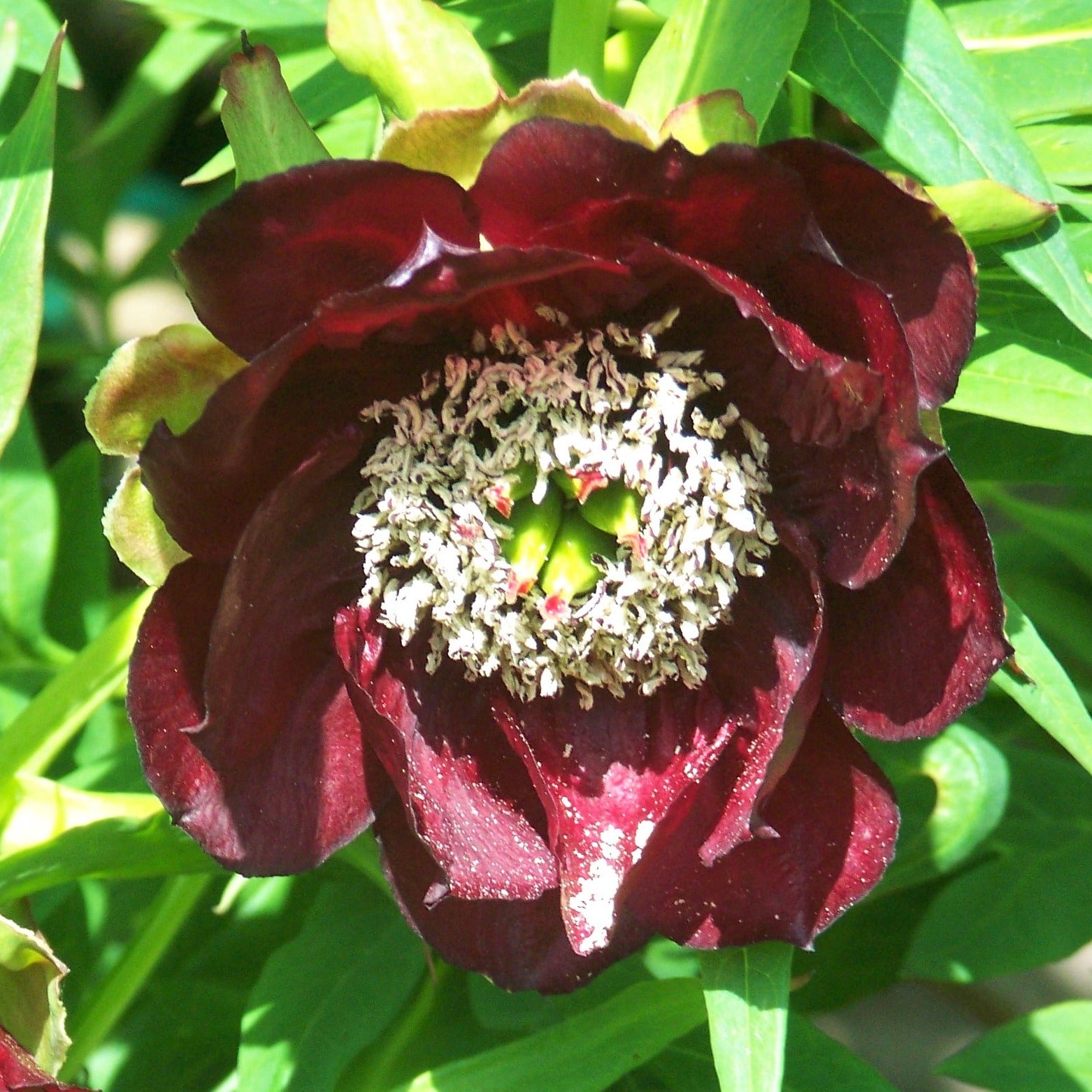Almost everyone knows what a peony looks like, having seen them growing in their grandparent’s garden or adding elegance and enticing fragrance to a cut-flower bouquet. Still, I think very few of us realize the immense diversity of this genus, with bloom colours and flower forms that are second to none in the world of perennials. So, with that in mind, here’s just a sampling of species and cultivars meant to reignite your passion for peonies.
Itoh Peonies – Itoh or Intersectional Peonies are hybrids of herbaceous (P. lactiflora) and tree peonies first crossed by Tochi Itoh of Japan back in 1948. They feature single to full semidouble blooms (6-8” wide) with a wide colour range that includes yellow (‘Bartzella’, ‘Sequestered Sunshine’), white, red (‘Lafayette Escadrille’), coral, pink (‘Yankee Doodle Dandy’) and purple. Plants average 2-3’ tall by 3-4’ wide at maturity, are hardy to USDA zone 4 and die back to the ground (cut the stems to 4-6”) for winter. They prefer part to full sun and can be divided like herbaceous peonies and should be fed in spring or early summer with a low nitrogen fertilizer (4-10-12 or 1-2-3 ratio).
Herbaceous Peonies – While most of us consider these old-fashioned perennials quite common, you actually have to go all the way back to the Tang dynasty (618-907) in China to trace their breeding. To date we have over 8000 named cultivars in a stunning array of colours which include coral (‘Coral Charm’) and near black (‘Black Swan’). Some of our most common varieties of Paeonia lactiflora are in fact well over a century old, including ‘Sarah Bernhardt’ (1906), ‘Duchesse de Nemours’ (1856), ‘Karl Rosenfeld’ (1908) and ‘Festiva Maxima’ (1851). There is even a whole line of Patio Peonies which were developed in Holland featuring strong stems and a compact growth habit (20-30” tall). They are named after cities and include ‘Oslo’ (cupped cranberry pink), ‘Madrid’ (white anemone), ‘Rome’ (double pink), ‘Moscow’ (semi-double red) as well as four others. Flower forms for this species include single, anemone (‘Bowl of Beauty’), full double (‘Dr. Alexander Fleming’, ‘Kansas’) and the tufted bomb form (‘Top Brass’). One of the truest reds can be found in ‘Red Charm’, a P. lactiflora and P. officinalis hybrid; like the species, it is quite cold hardy at USDA zone 3.
Paeonia lactiflora prefers a part to full sun exposure and likes a 2” topdressing of compost or aged manure in spring (do not cover the crown). As the stems start growing, train them into Peony rings for support and watch for signs of Botrytis (dark-spotted leaves, wilted stems), removing badly affected stems entirely, and spraying with fixed copper as a control. Although drought-tolerant, they will thrive with about 1” of water a week during summer dry spells. They can be transplanted or divided in the fall (after the leaves have died back), making sure those new divisions have a minimum of 3-5 eyes and are planted no deeper than 1-2” (or they won’t bloom). Plants left undisturbed should also have their faded stems cut to the ground in autumn.
Tree Peonies – Tree peonies or Paeonia suffruticosa eventually form a woody shrub (3-5’ tall by 3-4’ wide) with impressive blooms up to 10” wide. They need at least 6 hours of summer sun, preferably in the morning (the flowers fade in the afternoon sun) and require sharp drainage. Wet soils or overwatering will both result in quick decline and some protection from strong winds is also advised. These are grafted onto herbaceous peonies but need to be planted deeper (plant graft 4” down) and they are never divided. Tree peonies are long-lived shrubs that dislike being moved, but if you must transplant them, do it when they are dormant. Pruning is limited to the removal of dead wood after leafing out and deadheading spent flowers. They generally bloom from April to May with a colour range that includes white (‘Renkaku’ / ‘Flight of Cranes), purple, red (‘Houki’), pink and yellow (‘Kinshi’ / ‘Golden Bird’). Paeonia suffruticosa is generally hardy to USDA zone 4.
Species and Rarities – Occasionally one may come across unusual species of peonies, but these are quite rare, so if you want one, buy it sight on seen. Paeonia delavayi (Z5) is a multi-stemmed woody shrub that grows 3-5’ tall and prefers an open woodland exposure. It bears maroon to deep red blooms in May over deeply divided foliage. Paeonia lutea var. ludlowii (Z6) is another tree peony growing 6-9’ tall that is native to Tibet. This variety produces pure yellow bowl-shaped blossoms in late spring and prefers a part to full sun exposure. Paeonia veitchii (Z6) is an herbaceous peony with 3”-wide pink to magenta blooms in May. While it prefers part to full sun, it also performs well in the shade. Paeonia rockii (Z5) is named after the plant collector Joseph Rock and bears very showy 10” wide white flowers with dark purple blotches at the base of the petals. This tree peony grows 4-6’ tall and more bloom colours (pink to maroon) can be found in the ‘Gansu Mudan Hybrid Group’. Last but not least is the very unique Fernleaf Peony or Paeonia tenuifolia ‘Flore Plena’ (Z3) which is herbaceous and grows only 24” tall. The double crimson blooms are borne over spectacular fern-like foliage in May.

Paeonia Delavayi
If you would like to see some mature specimens of these rare peonies in flower, then I suggest you visit one of our local botanical gardens at UBC or VanDusen in Vancouver.


